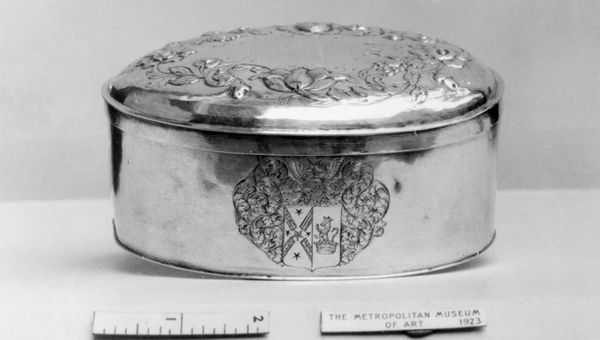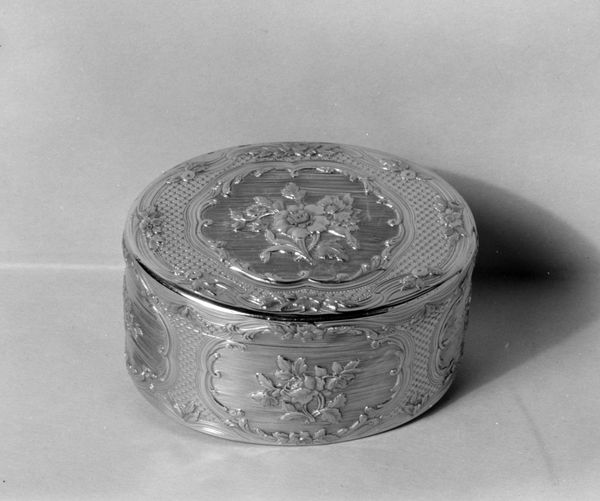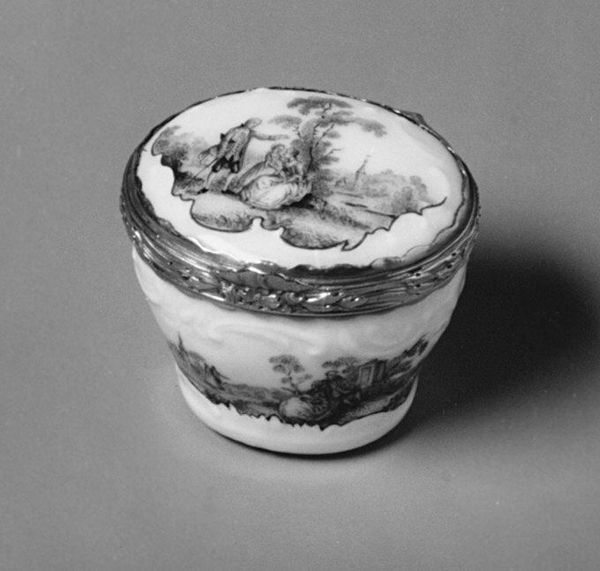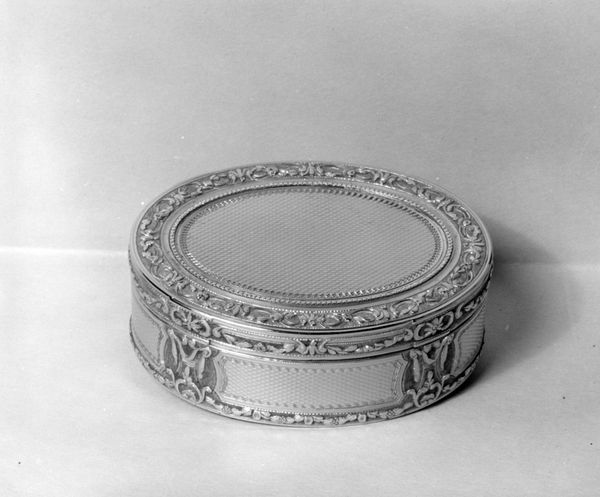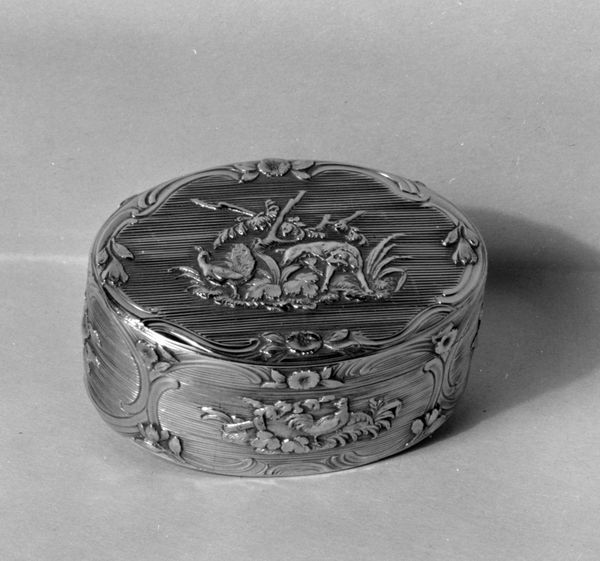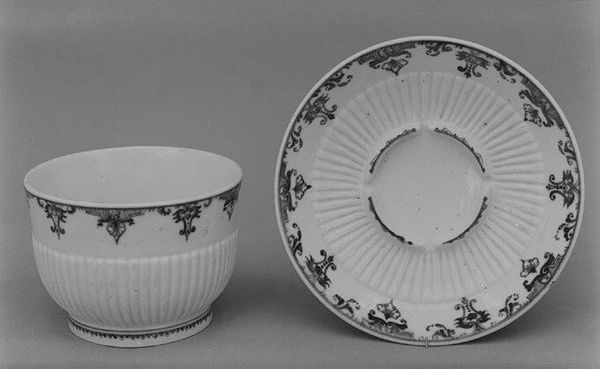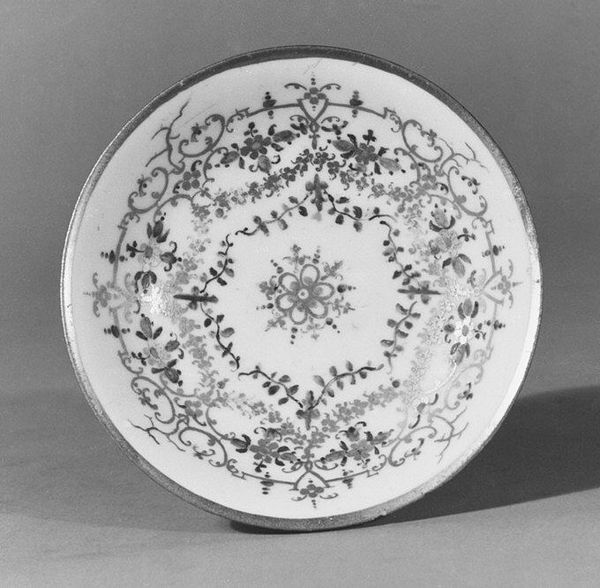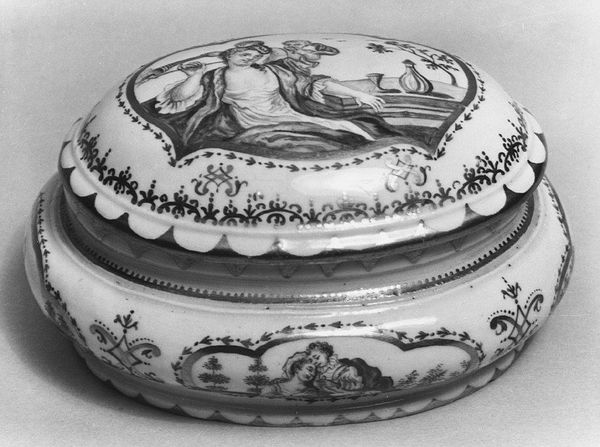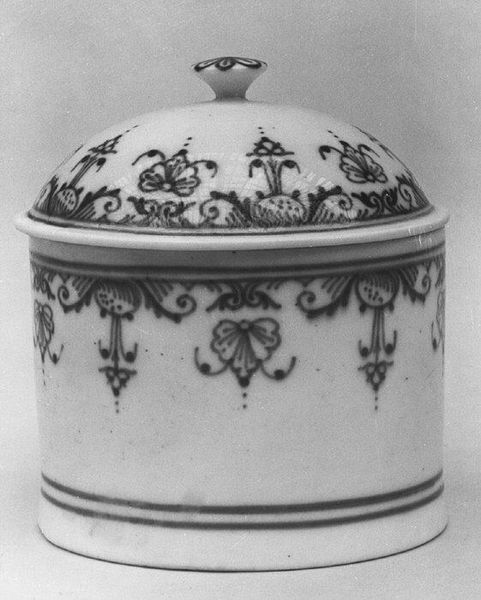
Dimensions: Overall (Cup [.277]): 2 1/2 × 2 1/2 in. (6.4 × 6.4 cm); Diameter (Saucer [.278]): 5 1/4 in. (13.3 cm)
Copyright: Public Domain
Curator: Take a look at this intriguing cup and saucer made by the Meissen Manufactory sometime between 1785 and 1795. Both pieces are currently on display at the Metropolitan Museum of Art. Editor: It looks deceptively simple, almost austere despite being categorized as Rococo. The sharp lines of the handle and the dense decoration... it's quite striking in its formality. Curator: Exactly! The lack of vivid color is significant. The ornamentation almost camouflages within the deep, reflective glaze of the porcelain. What we’re really looking at is the outcome of extensive labor to achieve perfection in both form and surface treatment. It showcases an investment in materiality and artisanal processes over pure aesthetic display. Editor: I'm fascinated by its historical context. The Meissen Manufactory enjoyed a high status, protected and influenced by royal patronage. Luxury goods like these served to solidify social standing, offering glimpses into the lifestyle of European elites, their tastes and ambitions for a time of relative global prosperity. Curator: Absolutely, and if we zoom in, the inscriptions on the saucer—probably dedications or personalized details—speak volumes. Consider also how raw materials like kaolin were mined, refined, and transported, then sculpted by skilled artisans. And imagine the social lives they, in turn, lived… Editor: Yes, it makes me consider the role museums like the Met have played in preserving and showcasing pieces like these—democratizing access and hopefully fostering public dialogue on the legacy of elite production. Curator: Right, because each choice, from clay composition to glazing, tells a story that involves economics, class, even chemistry! Editor: Seeing how cultural history and art blend to form an interpretation enriches the experience so. Thank you for your perspective. Curator: It highlights how focusing on the material details expands art understanding well beyond visual charm to encompass social and economic history!
Comments
No comments
Be the first to comment and join the conversation on the ultimate creative platform.
